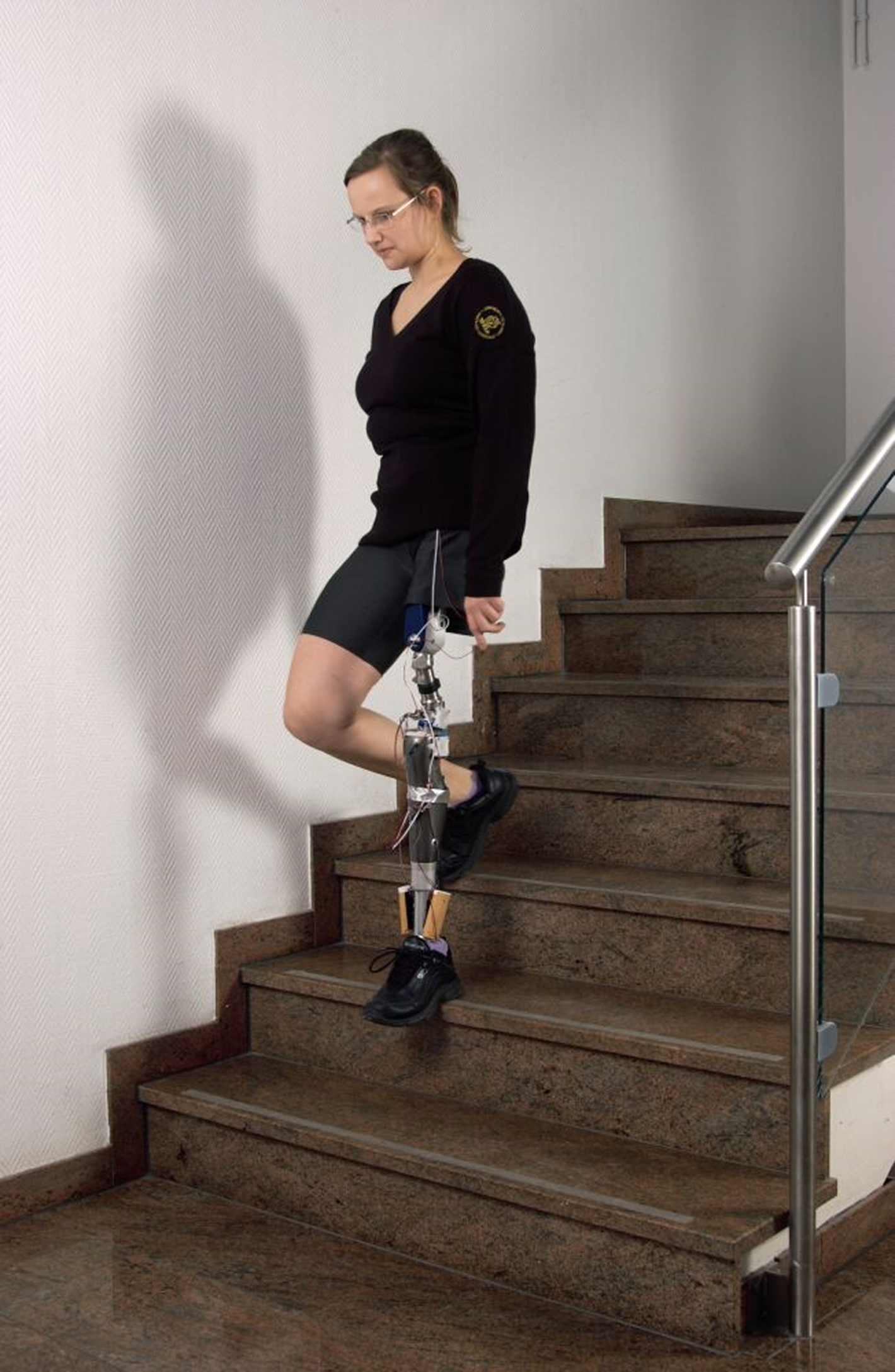Sensitive fitting process for leg prostheses
Leg prostheses need to be optimally adapted so that patients can walk properly. Until now, medical staff have had to document one or two steps by the patient in a gait laboratory. A new prosthesis adapter now records the wearer’s steps for a whole day – outside the lab.
Is the prosthesis suitably adjusted? Are the foot and the knee joint working together as they should? How harmonious is the patient’s gait? All these questions can be answered in a gait laboratory. Special plates in the floor of the lab measure how forcefully patients place their feet when walking and how they roll them. The movements are also recorded by several cameras. This helps the orthopedic technician to perfectly adjust the prosthesis. However, the measured data only take into account one or two steps made by the patient and repeated several times. In future, it will be possible to optimize prostheses outside the gait lab, too, and with greater accuracy. Researchers at the Fraunhofer Institute for Surface Engineering and Thin Films IST in Braunschweig have developed a special adaptive sensor in collaboration with Otto Bock HealthCare GmbH. The adapter measures 4 x 4 x 3 centimeters and sits at the ankle joint or above the knee. It measure the applied forces in three spatial dimensions and three torque moments. A miniature data logger near the sensor reads out the data and stores them. “This adapter makes it possible to continuously measure the load on a leg prosthesis during different routine activities throughout an entire day,” says IST team leader Dr. Ralf Bandorf. The adapter has eight measuring bridges, each with four strain gauges. These consist of a sputtered insulating layer covered with a metal film. When the patient walks, the layer stretches according to the type of movement performed, and this changes the electrical resistance of the metal film. The 32 strain gauges are placed at a number of different points and in different orientations, so the data provide a complete picture of the load acting on the prosthesis. Strain gauges used in sensor systems normally consist of adhesive films, but in this case the layers are sputtered directly onto the surface. This means they can also be applied to the complex geometries of the adapter, for instance its edges, which would be difficult in the case of adhesive films. Moreover, the film is insensitive to moisture and does not require the use of adhesives. “The main challenge was to design a suitable geometry for the adapter,” says Dr. Ralf Bandorf. It mustn’t be too large, as there is only limited space available inside the prosthesis, but it has to be large enough to accommodate the strain gauges. The developers are already testing a prototype of the adapter on the first patients, and will present it at the Hannover Messe (Hall 6, Stand F48) from April 20 to 24.
